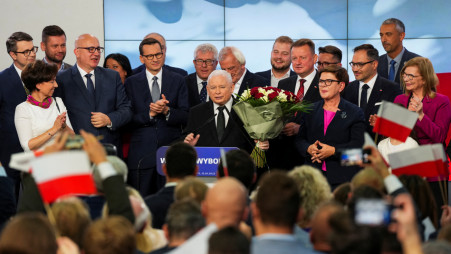
According to a survey by the European Court of Auditors published on 13 December 2023, two out of three trainees in the European Union are paid. Some of them, around 365000, receive monetary compensation coming from EU funds. Considering that the number of trainees per year is estimated at 3.7 million, EU financing of traineeship compensation amounts to approximately 10 per cent of the total trainees, and 15 per cent of those that are indeed paid. This seems a very significant figure already, which does not require for further push as a priority.
Under the so-called EU Reinforced Youth Guarantee Council recommendation, the EU fosters traineeships across all of its Member States. Since 2013, it has considered as a desirable practice that young people under the age of 30 perform a traineeship within four months of becoming unemployed or leaving education.
In 2023, the percentage of young people between ages 18 and 25 having performed at least one traineeship in the European Union has been 78 per cent in average. The Member State with the lower rate is Sweden, with 53 per cent, while Germany ranks first at 90 per cent.
On the other hand, the Reinforced Youth Guarantee recommends that young people perform their traineeships outside of their own Member State. So far, this has been achieved by 21 per cent of trainees, according to the mentioned survey of the EU auditors. Once more, such average shows different degrees of success depending on Member States of origin: in 2023, only 11 per cent of Portuguese trainees travelled abroad to some other territory in the Union, while 28 per cent of trainees in Romania did not perform their traineeship in their own country.
In fact, those figures show that the vast majority of employers and trainees still prefer traineeships to take place in their Member State of origin, rather than complying with the wish expressed by the current Union institutions.
The European Union also requests to regulate each traineeship through a written contract between the employer and the trainee; this is done in 68 per cent of cases. A similar figure, 68.7 per cent, is achieved with regards to granting trainees the same working conditions as for regular employees. One could ask in this respect whether such equality is also complied with in the case of EU institutions trainees; for example, in the field of health insurance or in relation to requisites for access to the workplace.
In terms of length, the Union suggests a minimum of thirty days and a maximum of six months. In practice, only 16.7 per cent of traineeships are lasting less and only 14.4 per cent extend beyond the mentioned maximum.
With regards to paid traineeships, out of the 27 Member States Poland leads the Union with more than 85 per cent compliance with the EU recommendation to provide the trainee with monetary compensation. At the other end of the spectrum, less than 40 per cent of German trainees receive some pay during their traineeship period.
Within the EU institutions, around 5000 traineeships are offered every year. This is equal to 0.1 per cent of the total existing in the Union, a very marginal quantity. Interestingly enough, most trainees in EU institutions are of Italian nationality, more than 10 per cent; moreover, applications for such traineeships coming from Italy dominate the arena massively, over 25 per cent of the total 68000 per year. Spain and France rank second and third, respectively, in the number of applications by EU Member States, but neither of the two even reach 50 per cent of Italian candidates. Despite the fact that applications coming from Germany are less than half of those corresponding to Spaniards’, German trainees outnumber their Spanish comrades by 15 per cent. Trainees coming from non-EU countries are more than those of 17 Member States.
Source of image: The Business Standard



 Subscribe
Subscribe